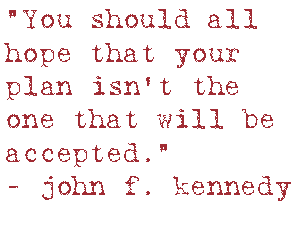Saturday, 20 October 1962
At this point in the crisis, Kennedy held all the options. He knew what the Soviets were doing and the Soviets didn’t know he knew. Kennedy still held the option of how and when to initiate the conflict. However, once initiated, the choices after the first one lose their flexibility precipitously. As in chess, the first series of moves need to be right. Kennedy decided that they had two more days to unify their plan, still giving the Americans a significant advantage in time to prepare and evaluate the choices they would potentially face.
As in chess, the first series of moves need to be right. Kennedy decided that they had two more days to unify their plan, still giving the Americans a significant advantage in time to prepare and evaluate the choices they would potentially face.
Throughout this day, the Executive Committee would struggle to present the President with courses of action and evaluations of the impacts of those choices on the crisis.
When President Kennedy returned from a campaign trip to Chicago he heard the arguments of the Executive Committee and decided to authorize the blockade.19 The emphasis of the Executive Committee shifted from debating what to do to how to accomplish this task in context of the international community. At this point, the military option was a fallback in the event of an unforeseen turn of events or if negotiations could not produce an acceptable solution.
The Executive Committee had a little over one day to consolidate the plan and the information campaign. All the components had to be queued correctly to enable Kennedy to present a unified image of American resolve.
Meanwhile, at 7:14 a.m. in Washington, the JCS sent a message to all unified commanders warning them that increased tension in the Cuban situation “could lead to military action.”20 The chiefs were prepared to execute air strikes against missiles on 22 October with twenty-four hour notice and proceed on to CINCLANT OPAN 312, 314, and 316 leading to a state of “general war.” Plans were made that evening to develop a blockade operation that would be executed twenty-four hours after the President’s speech (designated at P-Hour).21
The United States was preparing its case and had a significant additional advantage: The United States possessed information. Because Kennedy was in a position to choose when the crisis would be made public, he would be able to get the United States’ message out first. The message that gets out first, and the one that is best developed, is the one that often holds sway. The United States’ case was simple. They had evidence that missiles were in Cuba and they wanted the missiles out. There is clear fact and little rhetoric. It is easier to build international legitimacy when more emphasis is placed on fact and less on rhetoric. To borrow from the modern media: The United States was ahead of the story.

